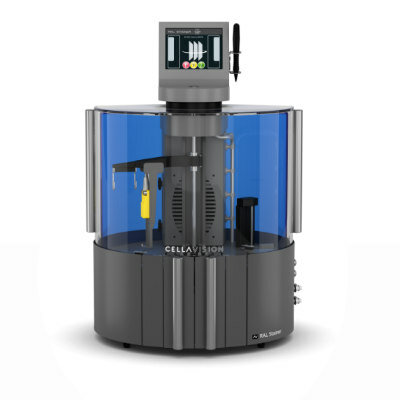Molecular Test Determines Tissue of Origin
By LabMedica International staff writers
Posted on 17 Jan 2011
Gene expression based on the Tissue of Origin Test can assist in identifying accurately and reliably the origin of metastatic or poorly differentiated tumors.Posted on 17 Jan 2011
The gene expression levels of formalin-fixed paraffin-embedded (FFPE) tissue, which is the most common clinical specimen type used in testing of cancer tumors, can be measured for more than 2,000 genes and the gene expression pattern of the specimen can be compared to that of 15 tissues in the test database, to indicate the most likely match. The tumor tissue types represented are bladder, breast, colorectal, gastric, hepatocellular, kidney, non-small-cell lung, ovarian, pancreatic, prostate, thyroid carcinomas, melanoma, testicular germ cell tumor, non-Hodgkin's lymphoma, and sarcoma
In a multisite validation study, 462 metastatic and poorly differentiated FFPE tumor tissue specimens from tissue banks, all of which had an available diagnosis identifying their tissue of origin as one of the 15 tissues in the test database, were analyzed using the Tissue of Origin Test. The Tissue of Origin Test (Pathwork Diagnostics, Redwood City, CA, USA; is a microarray-based gene expression test that compares the ribonucleic acid (RNA) profile of a tumor FFPE specimen to established RNA profiles of 15 known tissues. The test measures the degree of similarity between the expression patterns of the tumor and those of a panel of 15 different tissue types.
The overall agreement with the reference diagnosis was 89%. In addition to the positive test results, an average of 12 tissues for each specimen could be ruled out with greater than 99% probability. The large size of this study increases confidence in the test results. A multisite reproducibility study showed 89.3% concordance between laboratories. The Tissue of Origin Test makes the benefits of microarray-based gene expression tests for tumor diagnosis available for use with the most common type of histology specimen.
J. Scott Nystrom, MD, one of the study authors from Tufts-New England Medical Center (Boston, MA, USA), said, "The use of molecular technology to help determine the tissue of origin is a long awaited solution to an important clinical problem. This study demonstrates that gene expression analysis can be performed accurately and reliably on routine FFPE samples in a clinical setting.” The study was published in January 2011, in the Journal of Molecular Diagnostics.
Related Links:
Pathwork Diagnostics
Tufts-New England Medical Center













